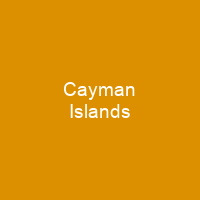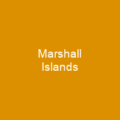The Cayman Islands: A Paradise of Unparalleled Beauty
Imagine a place where the sun sets in a blaze of gold, painting the sky with hues that seem almost too vivid to be real. Welcome to the Cayman Islands, a tropical paradise nestled in the western Caribbean Sea. These three islands—Grand Cayman, Cayman Brac, and Little Cayman—are more than just a vacation destination; they are a living testament to nature’s grandeur.
A Brief History
Did you know that Christopher Columbus first laid eyes on the Cayman Islands in 1503? It’s like he was drawn to them by some invisible force, as if the islands were calling out from the sea. The name ‘Cayman’ itself is a fascinating story, derived from the Arawak-Taíno people’s word for crocodile. But don’t worry; you won’t find any real crocodiles here! Instead, you’ll encounter an array of marine life that will leave you in awe.
From Pirates to Prosperity
The islands have a rich history that includes pirates, sailors, and even deserters from Oliver Cromwell’s army. England took formal control in 1670 as part of the Treaty of Madrid. Over time, the Cayman Islands evolved into a major offshore financial center, known for its zero tax on income earned or stored.
Geography and Wildlife
The Cayman Islands are not just a collection of beautiful beaches; they are an intricate ecosystem teeming with life. Grand Cayman is the largest island at 197 km2, while the nearest land mass from Grand Cayman is the Canarreos Archipelago, about 240 km away. The islands’ unique formation as coral heads covering submerged ice-age peaks has created a landscape that is mostly flat but with notable exceptions like The Bluff on Cayman Brac.
When it comes to wildlife, the islands are home to eight bat species and introduced agoutis. Marine life includes tarpon, silversides, French angelfish, giant barrel sponges, and various cetaceans such as whales. Avian fauna is equally diverse, with endemic subspecies of parrots and boobies, along with the blue iguana.
Climate and Natural Disasters
The climate in the Cayman Islands is tropical wet and dry, with a wet season from May to October and a dry season from November to April. However, these islands are not immune to natural disasters; Hurricane Ivan struck in 2004, causing significant damage. Yet, the resilience of the Cayman Islanders was evident as they rebuilt their infrastructure within two years.
Economy and Society
The economy of the Cayman Islands is a fascinating blend of financial services and tourism. With no tax on income earned or stored, it’s no wonder that many seek refuge here. The islands have a high standard of living, but also face challenges such as increasing competition in the workforce and rising costs.
Work Permits and Immigration
To work in the Cayman Islands, you need a work permit unless you are a Caymanian citizen. The government’s primary source of income is indirect taxation, with import duties ranging from 5% to 22%. The economy is dominated by financial services and tourism, making it a hub for offshore finance.
Government Structure
The Government of the Cayman Islands is divided into several departments and statutory boards. Two major political parties, the Cayman Democratic Party (CDP) and the People’s Progressive Movement (PPM), have been in power since 2000. The current Governor is Jane Owen, and the Premier is McKeeva Bush, who was removed from office after a no-confidence motion due to an assault conviction.
Healthcare and Emergency Services
The Cayman Islands offer access to emergency services via 9-1-1. The Cayman Islands Department of Public Safety’s Communications Centre handles emergency calls, while police services are handled by the Royal Cayman Islands Police Service and fire services by the Cayman Islands Fire Service.
Education
Educational opportunities in the Cayman Islands range from state schools to private institutions. Public high schools include John Gray High School, Clifton Hunter High School, and Layman E. Scott High School (Cayman Brac). Private schools are operated by various churches and foundations.
Sports
Association football is the most popular sport in the Cayman Islands, with a vibrant community supporting the national team. Basketball, rugby union, cricket, squash, and other organized sports leagues also thrive here. The Truman Bodden Sports Complex in George Town serves as a hub for these activities.
Culture and Media
The Cayman Islands have a rich cultural scene that includes the F. J. Harquail Cultural Centre, Harquail Theatre, and music festivals like the Cayman JazzFest and Seafarers Festival. The National Gallery of the Cayman Islands is an art museum founded in 1996, offering visitors a glimpse into the local artistic heritage.
Local media includes newspapers, online news services, radio stations, and three over-the-air broadcast channels. Cable television is available through providers like C3 Pure Fibre – FLOW TV – Logic TV, while satellite television is provided by Dish Direct TV. Broadband is widely available on the Cayman Islands with Digicel, C3 Pure Fibre, FLOW, and Logic providing super fast fibre broadband to the islands.

The Cayman Islands offer a unique blend of natural beauty, rich history, and modern amenities. Whether you’re seeking adventure, relaxation, or simply a place to call home, the Cayman Islands have something for everyone. So why not explore this hidden gem today?
You want to know more about Cayman Islands?
This page is based on the article Cayman Islands published in Wikipedia (retrieved on March 6, 2025) and was automatically summarized using artificial intelligence.






